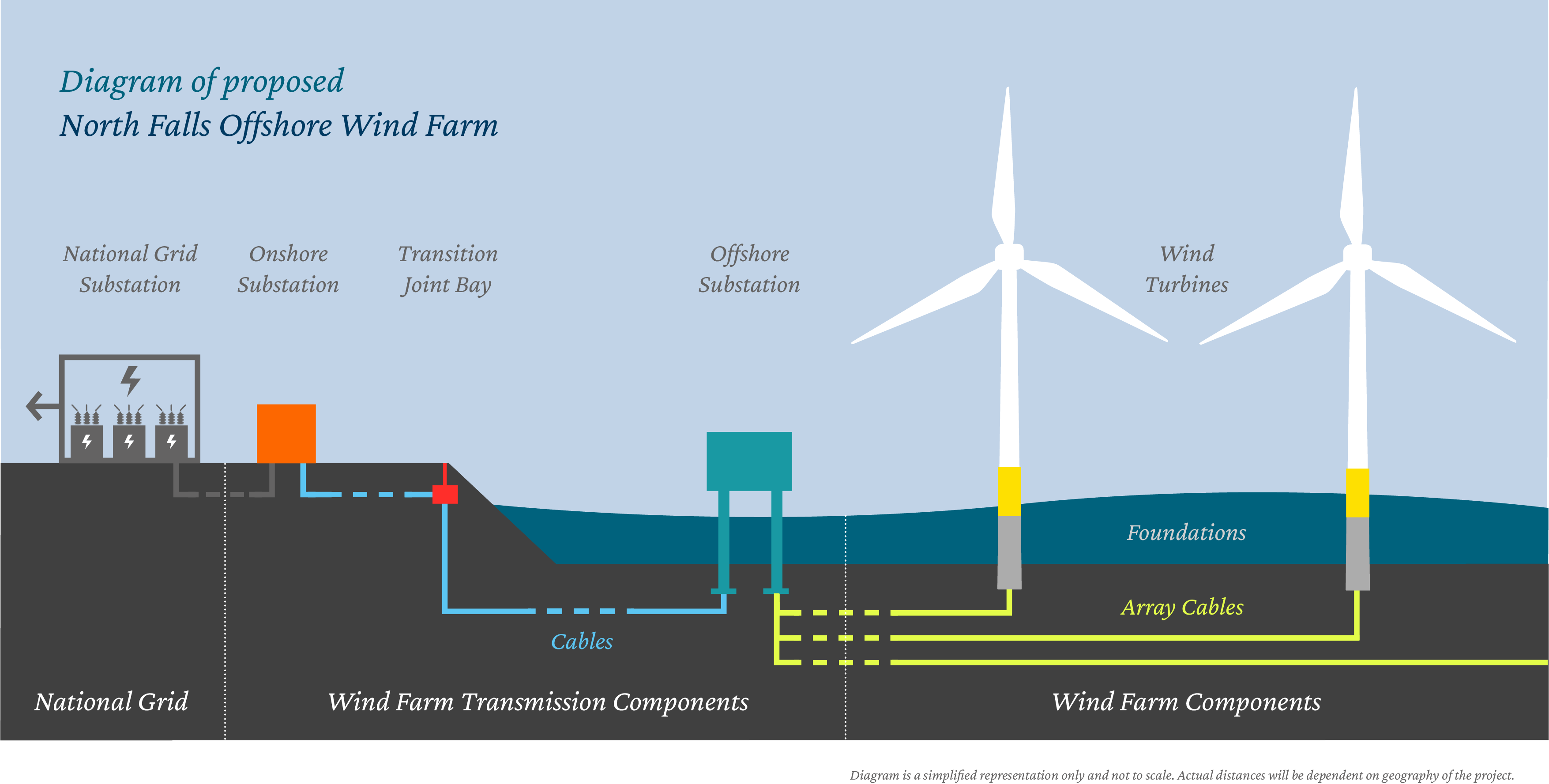The information on this page was correct at the time of publishing (December 2022). The project has since evolved and we would encourage you to read our September update for more information.
North Falls: project description
Design envelope
Due to the complex nature of offshore wind farm development and the fact that the proposals are still evolving, specific details of the project are still under consideration. Some final specifications are not due to be decided until after the submission of our application.
For this reason, we have incorporated a 'range' of parameters, which is known as the design envelope. By applying a design envelope, it means that we are in effect presenting a realistic 'worst case scenario' rather than what we anticipate as the final project design.
This consultation will present the information that is known plus the ranges where specific details are yet to be finalised related to: the offshore array, proposed offshore cable route and landfall, onshore cable corridor and onshore substation search area.

Project description
North Falls has an offshore array area of 150km2 split into two sections within the Outer Thames Estuary, in the southern North Sea. Its closest point to land is 22.5km from the East Anglia coast near Orford.
The current proposals for North Falls include wind turbines on fixed foundations, the design of which is still to be determined. Array cables will connect the turbines in strings to either one or two offshore substations, also on foundation(s). An interconnector will join the project's northern and southern sections.
At this stage it is planned for subsea export cables to bring the power to shore at a location known as 'landfall', with underground onshore cables carrying the power to a new onshore substation. From here the power will be transmitted to the national grid.
22.5km
Closest distance to shore - 22.5km
150km2
Site size - 150km2 across two sections
504MW
Around 504MW installed capacity
£1.5bn
Potential investment in UK electrical infrastructure - at least £1.5bn
400,000
Number of UK homes to be powered - at least 400,000
Turbines
As turbine technology is likely to evolve between now and the possible start of construction for North Falls, we are looking at a range of machines in terms of size and the final number installed. The project has the potential for up to 72 turbines in total.
Foundations
Each turbine and the offshore substation(s) will sit on top of a foundation. The type and design of foundations will be informed by site investigations and a procurement process, after the project has been consented. They may be: monopiles; jackets on pin piles or on suction caissons, or gravity base structures.
Offshore views
To view what the wind farm could look like offshore we have prepared this 3D interactive model with viewpoints from onshore locations. The model features the potentially smallest and largest turbines in our scoping report, so you can compare the difference in potential visual impact by switching between the screens. Please read the instructions to ensure you get the most out of the model.
Offshore electrical infrastructure
This will comprise the array cables between the turbines, the offshore substation(s), an interconnector between the two array sections and export cables bringing the power to shore.
The array cables transmit the power between the turbines and the offshore substation(s). The length of the array cables will depend on the spacing of the turbines and their placement in relation to the offshore substation. The final turbine, interconnector and array layout will be decided post-consent. Likewise the location and design of the offshore substations will also be finalised during the design phase of the project.
Landfall
Landfall is where the offshore export cables which bring power from the wind farm come to shore underground. For North Falls this will be on the coast near Frinton-on-Sea, with the final location still subject to review.
Onshore electrical infrastructure
From landfall, power will be transmitted by underground cables to a new onshore substation. From there, it will be further transported to a National Grid substation and then on to the national grid.
A grid connection in Tendring, Essex was offered to the project by the National Grid, so the project has been working to design the best way to bring power into that connection.


